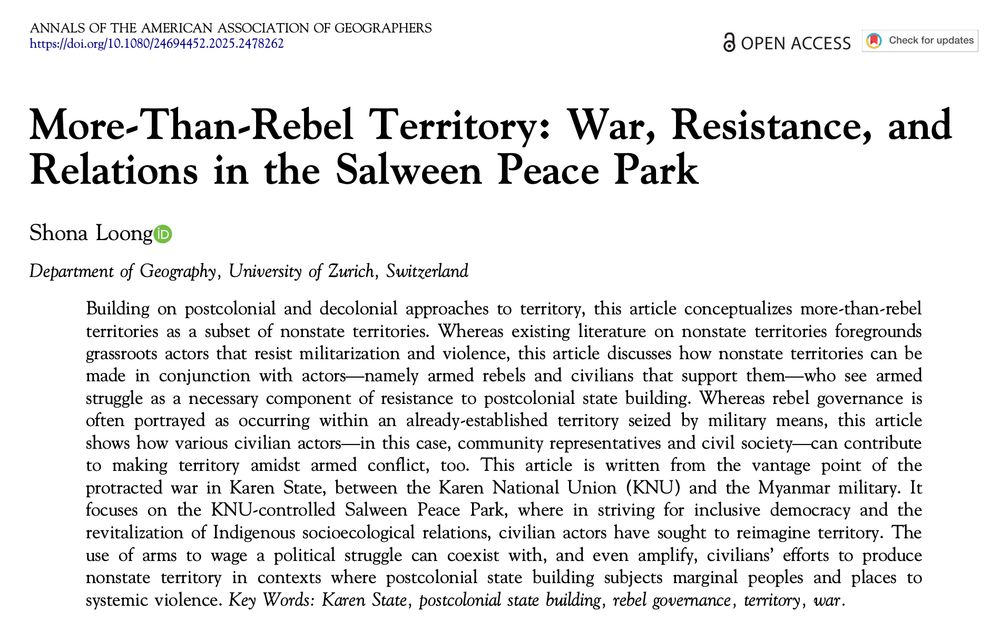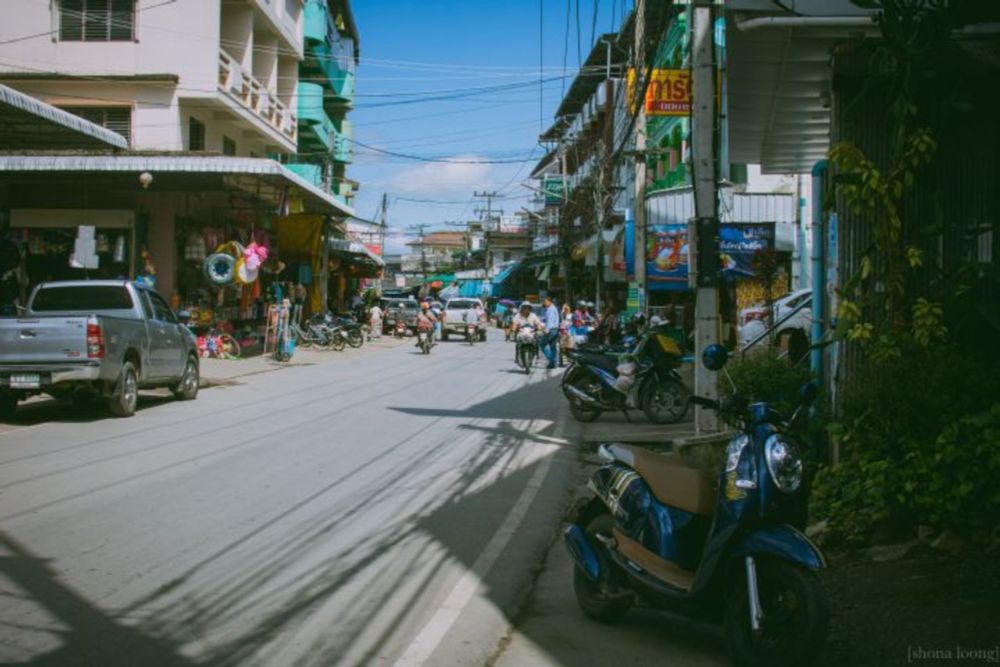Dr Shona Loong
@shonaloong.bsky.social
180 followers
250 following
33 posts
Conflict, aid politics, #WhatsHappeninginMyanmar | Senior Scientist in Political Geography, University of Zurich | DPhil @oxfordgeography.bsky.social
https://www.shonaloong.com
Posts
Media
Videos
Starter Packs
Pinned
Reposted by Dr Shona Loong
Dr Shona Loong
@shonaloong.bsky.social
· Jul 28
Dr Shona Loong
@shonaloong.bsky.social
· Jul 28
Dr Shona Loong
@shonaloong.bsky.social
· Jul 28
Dr Shona Loong
@shonaloong.bsky.social
· Jul 28
Dr Shona Loong
@shonaloong.bsky.social
· Jul 28
Dr Shona Loong
@shonaloong.bsky.social
· Jul 28
Reposted by Dr Shona Loong
David Brenner
@davidbrenner.bsky.social
· May 13

Rebel Politics after the Coup: Ethnic Armed Organisations and Myanmar’s Spring Revolution
Ethnic armed organisations or EAOs play a pivotal role in the revolutionary war against Myanmar’s junta. These ethno-national rebel movements have not only captured large swathes of territory, but ...
doi.org
Reposted by Dr Shona Loong
David Brenner
@davidbrenner.bsky.social
· Apr 24
Dr Shona Loong
@shonaloong.bsky.social
· Apr 17

More-Than-Rebel Territory: War, Resistance, and Relations in the Salween Peace Park
Building on postcolonial and decolonial approaches to territory, this article conceptualizes more-than-rebel territories as a subset of nonstate territories. Whereas existing literature on nonstate...
doi.org
Dr Shona Loong
@shonaloong.bsky.social
· Apr 17
Dr Shona Loong
@shonaloong.bsky.social
· Apr 17
Dr Shona Loong
@shonaloong.bsky.social
· Apr 17
Dr Shona Loong
@shonaloong.bsky.social
· Apr 17
Dr Shona Loong
@shonaloong.bsky.social
· Apr 17
Dr Shona Loong
@shonaloong.bsky.social
· Apr 17
Dr Shona Loong
@shonaloong.bsky.social
· Apr 14
Dr Shona Loong
@shonaloong.bsky.social
· Apr 14






